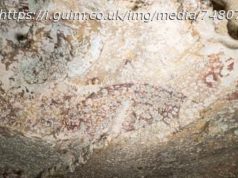Array
U.S. Marine Mitchell Paige faced a horde of Japanese soldiers as his company’s sole survivor in Guadalcanal. But for ten hours, defying all odds, Paige held the line.
Today marks the birthday of the U.S. Marine Corps. Even before the United States had declared its independence from Great Britain, in Tun Tavern in Philadelphia, on Nov. 10, 1775, the Marines came into being. The Marine Corps has since earned the reputation of having the toughest fighters in the military. As their song says, they will always fight our country’s battles, whether on air, on land, or on sea.
Today we honor all the brave U.S. Marines who fought and died throughout our nation’s history, from 1775 up to our present day, including my great-uncle Bruce Webb, who died in Vietnam. There are countless stories of Marine heroism — from Fr. Capodanno the “Grunt Padre” to Chesty Puller to “Manila John” Basilone to Daniel Daly to the Monford Point Marines. But today I’m going to focus on Paige.
Mitchell Paige was born in 1918 to Serbian immigrants. His real name was Mihajlo Pejic, and he was raised on American patriotism and stories of Serbian heroism, according to History Collection. From the time the young Pejic — who later anglicized his name — saw a parade of U.S. Marines, he knew what he wanted to do when he grew up. So great was his enthusiasm that he walked some 200 miles from his home in Pennsylvania to Baltimore and a Marine recruiting center. He enlisted on Sept. 1, 1939.
Paige was a gunner on the battleship USS Wyoming, served in California, the Philippines, China, and Cuba, played baseball, and was part of the initial cadre setting up the famous Camp Lejune Marine training base. After the U.S. entered WWII, Sgt. Paige and his platoon were off for Guadalcanal in the Solomon Islands — in other words, hell on earth.
The Japanese needed Guadalcanal to disrupt supply lines and communications, and the Americans couldn’t let that happen. The U.S. invasion of Guadalcanal began promisingly, as the Americans seized a nearly-completed airfield, but soon the waters became too dangerous for the U.S. Navy, which left. Marines were stranded without even all of their supplies and munitions as the Japanese brought in reinforcements and aimed to recapture the airfield. The airmen and Marines in Guadalcanal soon found themselves in a desperate weeks-long fight that History Collection calls “sheer hell.
Home
United States
USA — Art Marine Corps Birthday and the Lone Marine who Fought a Japanese Army...






